Best Desktop Computer CPU Processor brands 2023
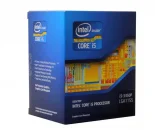
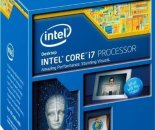
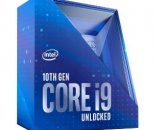
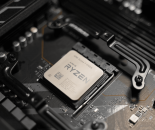
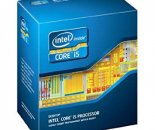
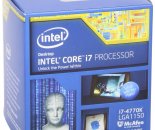
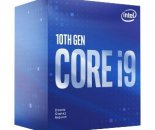
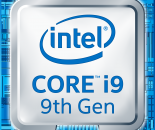
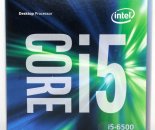
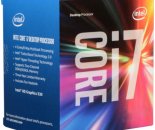
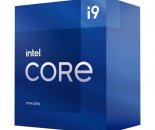

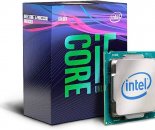
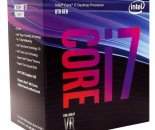
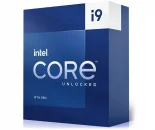

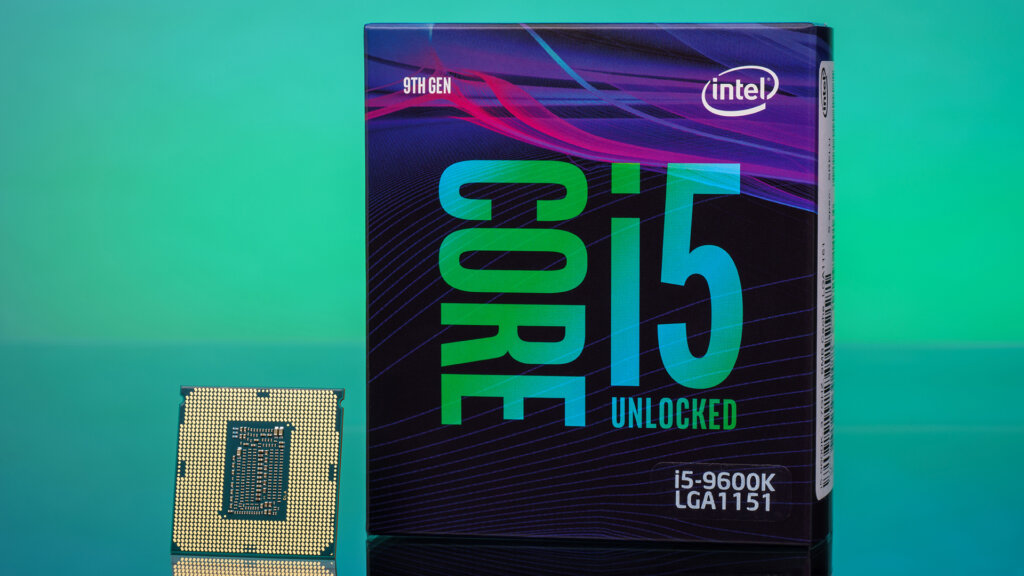
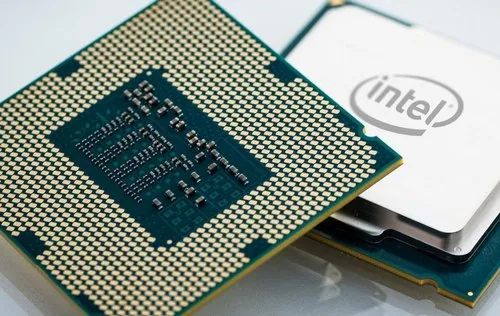
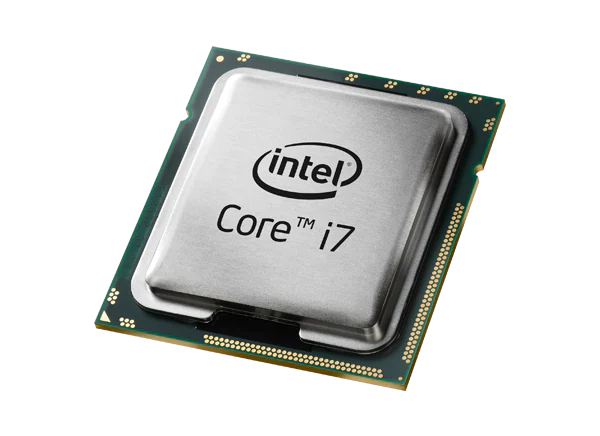
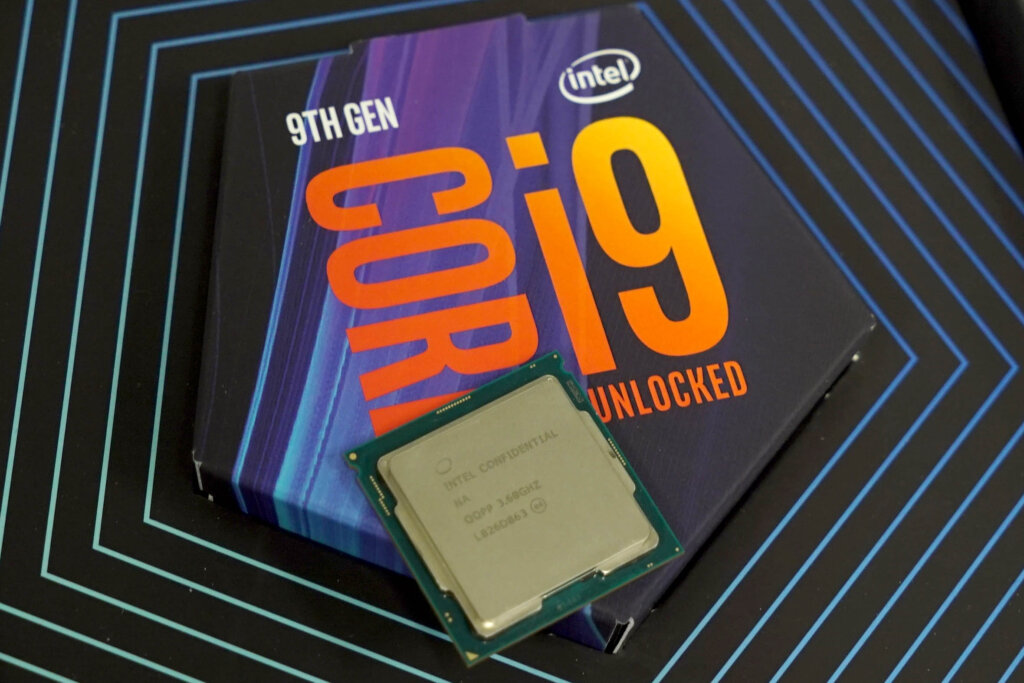
Unveiling the Distinction: Desktop-Class CPUs vs. Laptop-Class CPUs
When it comes to processors for PCs, AMD and Intel are the leading manufacturers, offering a range of options for system manufacturers. However, it can be challenging to differentiate between desktop-class and laptop-class CPUs due to similar model names. The distinction between these two types of processors, emphasizing the significant performance differences that arise from choosing the right CPU for your specific needs.
Desktop-grade CPUs are designed explicitly for desktop computers, offering higher performance and power capabilities. AMD and Intel develop dedicated desktop-class processors that deliver exceptional processing power, making them ideal for demanding tasks such as gaming, content creation, and resource-intensive applications.
Both AMD and Intel use similar model names for their CPUs, which can cause confusion among consumers. For instance, you may encounter the Intel Core i7 processor in both laptops and desktops. However, it’s crucial to distinguish between CPUs designed for true desktop computers and those built for mobile devices like laptops.
Opting for a “true” desktop CPU can significantly impact performance compared to using a laptop-class CPU. Desktop-class CPUs are built to handle higher power consumption, allowing for faster clock speeds and more cores. As a result, they deliver superior performance in multitasking, heavy computational tasks, and applications that require substantial processing power.
Laptop-class CPUs, on the other hand, are designed to prioritize power efficiency and thermal constraints. These processors are optimized for laptops, where battery life and heat dissipation are critical factors. While laptop-class CPUs can deliver adequate performance for everyday computing tasks, they may not match the sheer power of desktop-class CPUs.
When selecting a CPU, it’s essential to align your choice with your specific requirements. If you primarily use your computer for light productivity tasks, web browsing, and media consumption, a laptop-class CPU can suffice. However, if you engage in resource-intensive activities like video editing, 3D rendering, or gaming, a desktop-class CPU is the optimal choice to ensure smooth and efficient performance.
Another advantage of desktop-class CPUs is the potential for upgradability and customization. Desktop computers allow for easier CPU upgrades, giving you the flexibility to enhance performance in the future. Laptop-class CPUs, on the other hand, are often soldered onto the motherboard, limiting upgradability options.
When choosing a CPU for your PC, understanding the distinction between desktop-class and laptop-class CPUs is crucial. While similar in model names, these processors cater to different usage scenarios and offer varying levels of performance. By opting for a true desktop CPU, you unlock the potential for exceptional processing power, making it ideal for demanding tasks. On the other hand, laptop-class CPUs prioritize power efficiency and thermal constraints, suitable for portable devices with more modest computing needs. Make an informed decision based on your specific requirements to ensure optimal performance and productivity for your computing experience.
The Benefits of Desktop CPUs
When it comes to complex content creation, PC gaming, and intensive math or scientific projects, having a desktop CPU is essential. The advantages of desktop CPUs, which provide superior power and performance compared to their laptop counterparts. We’ll discuss how faster processors with multiple cores and advanced features like multithreading can enhance your computing experience for tasks that require maximum processing capabilities.
A desktop CPU is designed to tackle demanding tasks that require substantial processing power. Whether you’re a content creator working with intricate designs, a PC gamer seeking smooth gameplay, or a researcher crunching complex data, a desktop CPU delivers the raw power needed to handle these workloads effectively.
Desktop CPUs feature multiple cores, ranging from four to as many as 18 cores, enabling them to excel in software optimized for parallel processing. Applications that can leverage the power of multiple cores benefit from the enhanced performance delivered by desktop CPUs. The ability to divide tasks among these cores ensures faster execution, improved multitasking, and seamless handling of resource-intensive software.
Compared to their laptop counterparts, desktop CPUs consume more power and generate additional heat. This is due to the higher performance capabilities and the need to accommodate larger thermal and power-delivery requirements. Desktop CPUs are specifically engineered for environments that offer greater flexibility in managing thermal constraints, allowing for sustained performance even during intense workloads.
One key feature that sets desktop CPUs apart is multithreading, also known as “Hyper-Threading” in Intel CPUs. Multithreading allows each core to handle two processing threads simultaneously, doubling the processing power for suitably equipped software. This advanced capability can result in a significant performance boost, particularly in tasks that take advantage of multithreading, such as video rendering, data analysis, and 3D modeling.
Desktop CPUs offer versatility and customization options, allowing you to tailor your system to meet your specific needs. Whether you’re building a high-end gaming rig, a professional workstation, or a scientific computing setup, desktop CPUs provide the necessary horsepower and flexibility to optimize your computing experience.
When it comes to handling complex content creation, PC gaming, or math and scientific projects, a desktop CPU is a game-changer. With its powerful processing capabilities, support for multiple cores, and advanced features like multithreading, a desktop CPU ensures superior performance and efficiency. While consuming more power and generating additional heat compared to laptop CPUs, desktop CPUs are designed to excel in demanding environments. Unlock the potential of your computing experience by harnessing the power of a desktop CPU, enabling you to take on even the most challenging tasks with ease and efficiency.
Intel CPU / Intel CPUs processor generations
For more than half a century, Intel processors have stood at the forefront of technological innovation, shaping and propelling the digital revolution that has transformed our world. From the earliest days of computing to the present, Intel processors have been the driving force behind the creation of the modern digital global economy.
Intel’s commitment to pushing the boundaries of what is possible has resulted in processors that are renowned for their speed, power, and efficiency. Whether it’s powering personal computers, servers, or mobile devices, Intel processors deliver exceptional performance and reliability, making them the go-to choice for tech enthusiasts, businesses, and industry leaders alike.
The journey of Intel processors began in 1968 when the company was founded by visionary entrepreneurs Robert Noyce and Gordon Moore. Since then, Intel has consistently been at the forefront of semiconductor technology, constantly pushing the limits of what is achievable. Through continuous research, development, and innovation, Intel has maintained its position as a global leader in microprocessor technology.
One of the key factors that sets Intel processors apart is their ability to deliver groundbreaking performance. From the early days of the Intel 4004, the world’s first microprocessor, to the latest generation of Intel Core processors, each iteration has seen significant advancements in computing power. These processors have enabled new possibilities in fields such as artificial intelligence, machine learning, data analytics, and high-performance computing, fueling technological advancements across industries.
Moreover, Intel processors have a long-standing reputation for their reliability and efficiency. With rigorous testing and quality control measures, Intel ensures that their processors meet the highest standards of performance and durability. This level of reliability has made Intel the preferred choice for critical applications, where stability and uptime are of utmost importance.
Navigating the CPU Landscape: Understanding Intel’s Processor Families and Generations
As technology continues to evolve, Intel remains committed to driving innovation and shaping the future of computing. The company’s relentless pursuit of faster, more efficient, and more powerful processors has paved the way for advancements in areas such as virtual reality, augmented reality, and autonomous systems. Intel’s processors are the backbone of the ever-expanding digital ecosystem, empowering individuals and businesses to achieve more, connect globally, and drive economic growth.
Intel processors have revolutionized the world of computing and played a pivotal role in shaping the digital global economy we know today. With their unwavering commitment to innovation, Intel continues to lead the way, pushing the boundaries of what is possible and enabling a future powered by technology. As we look ahead, we can expect Intel processors to remain at the forefront of technological advancements, driving the next wave of innovation and transforming industries across the globe.
In the realm of computer processors, Intel has established itself as a driving force, continuously innovating to deliver unparalleled performance. To better understand the hierarchy and capabilities of Intel’s processors, it’s crucial to delve into the world of core counts, generations, and their impact on overall performance.
Traditionally, the number of cores within a CPU has served as a reliable indicator of its processing power. In general, quad-core processors tend to outperform dual-core ones, while hexa-core processors offer even greater performance than quad-core ones. However, it’s important to note that this rule of thumb may not always hold true when considering the advancements made in CPU generations.
Intel organizes its processors into families, each with its own line of Core i3, Core i5, and Core i7 series. Within these families, the company releases different generations of chipsets, signifying a significant leap forward in terms of performance, features, and architectural enhancements. These generations introduce improvements in areas such as clock speeds, cache sizes, instruction sets, power efficiency, and overall performance capabilities.
With each new generation, Intel pushes the boundaries of what is possible, introducing advancements that redefine the computing landscape. From enhanced multitasking capabilities to improved power management, each generation brings tangible benefits to users across a wide range of applications and workloads.
It’s worth noting that as technology evolves, the correlation between core count and performance becomes more nuanced. Modern processors utilize advanced technologies like hyper-threading and turbo boost, which optimize the utilization of available cores and deliver higher performance in single-threaded and multi-threaded scenarios.
When considering a CPU for your specific needs, it’s essential to evaluate the generation alongside the core count. A newer generation processor with fewer cores may outperform an older generation processor with more cores due to architectural improvements and optimizations. Therefore, it’s recommended to look at benchmark tests and performance comparisons to make an informed decision based on your requirements.
While the general rule suggests that quad-core processors are better than dual-core processors, and hexa-core processors are superior to quad-core ones, this hierarchy may not always apply across all CPU generations. Intel’s Core i3, Core i5, and Core i7 series processors are organized into families, with each family having its own line of chipsets known as generations. As technology advances, the performance capabilities and optimizations introduced in newer generations can outweigh the sole consideration of core count. To make an informed choice, it’s crucial to evaluate benchmarks and performance tests for specific CPU models within their respective generations. Stay up to date with the latest processor releases and explore the diverse range of Intel CPUs to find the ideal balance of performance and functionality for your computing needs.
| For Mobile Gaming, Nintendo Switch, Xbox One, PS4 & PS5 | ||
| Ear Gaming Headset | Turtle Beach Battle Buds | Best Price >> |
| JBL Quantum 100 Wired Over-Ear Gaming Headset with Boom Mic, PC and Console Compatible, in White | Leather / Over Ear | Best Price >> |
| JBL Quantum 300 Wired Over-Ear Gaming Headsets with Microphone, PC and Console Compatible, in Black | Leather / Over Ear | Best Price >> |
| JBL Quantum 100 Wired Over-Ear Gaming Headset with Boom Mic, PC and Console Compatible, in Blue | Leather / Over Ear | Best Price >> |
The innovative new PS5 controller DualSense wireless controller highly immersive gaming experience, built-in microphone and create button, all integrated into an iconic, comfortable design, you would love to discover.
| Controller: | ||
| PlayStation 5 DualSense Wireless Controller, highly immersive gaming experience. | Best Price >> | |
| PlayStation 5 PULSE 3D Wireless Headset, dual noise-cancelling microphones,fine-tuned for 3D Audio on PS5 consoles. | Best Price >> | |
- Long awaited Playstation 5
- A revolutionary piece of technology
- It has changed the Gaming world
- It comes with Ultra high speed SSD
- Long awaited Playstation 5
- It comes with Ultra high speed SSD
- Velit esse cillum dolore eu fugiat nulla pariatur
- A revolutionary piece of technology
- A revolutionary piece of technology
- A revolutionary piece of technology
- It comes with Ultra high speed SSD
- Ullamco laboris nisi ut aliquip ex ea commodo
- Duis aute irure dolor in reprehenderit in voluptate
- It comes with Ultra high speed SSD
Unleashing the Power of the Digital Brain, Decoding Computer Processors
In the realm of computer technology, the processor reigns supreme as the brain that drives the entire system. However, comprehending the intricacies and distinguishing the nuances between various processors can be a challenging task that demands an ample amount of brainpower on your part.
At the heart of every computer, whether it be a desktop, laptop, or even a mobile device, resides the processor. Often referred to as the central processing unit (CPU), the processor is responsible for executing and coordinating the myriad of tasks that keep our digital world running smoothly.
Understanding the differences between processors is crucial, as it directly impacts the overall performance and capabilities of a computer system. Processors come in various forms, each with its own unique features, architecture, and performance metrics. From Intel to AMD, Qualcomm to Apple Silicon, the market is brimming with choices, making it essential to delve into the intricacies to find the perfect match for your specific needs.
Clock speed, core count, cache size, and architecture are just a few of the factors that determine a processor’s capabilities. Higher clock speeds result in faster processing, while more cores allow for multitasking and improved performance in demanding applications. Cache size enhances data access, ensuring quicker retrieval and execution of instructions. Architecture, on the other hand, determines the overall efficiency and power consumption of the processor.
The choice of processor depends on the intended usage. For gamers and multimedia enthusiasts, a processor with high clock speeds and multiple cores is vital to handle the demanding nature of modern games and multimedia applications. Content creators and professionals working with resource-intensive software, such as video editing or 3D rendering, benefit from processors that excel in multi-threaded performance.
The operating system and software compatibility play a crucial role in selecting the right processor. It’s essential to ensure that the processor is compatible with the desired operating system and optimized for the software applications you plan to use. This compatibility ensures a seamless and efficient computing experience, maximizing productivity and minimizing potential bottlenecks.
As technology advances, processors continue to evolve at a rapid pace. Manufacturers strive to develop processors that deliver higher performance while being energy-efficient, offering a balance between power and sustainability. The relentless pursuit of innovation drives the industry forward, ushering in new advancements such as improved architecture, smaller nanometer processes, and enhanced integration of specialized components like graphics processing units (GPUs) and artificial intelligence accelerators.
Understanding the intricacies of computer processors is vital for harnessing the true power of your digital brain. By delving into the nuances of clock speeds, core counts, cache sizes, and architectures, you can make informed decisions when choosing a processor that aligns with your specific requirements. Stay up-to-date with the latest advancements in processor technology, as it continues to push the boundaries of what is possible in the world of computing. With the right processor, you can unlock a world of computing potential, unleashing your creativity, productivity, and enjoyment in the digital realm.
Dual-Core to Quad-Core Evolution, Unveiling the Intel Core i3 Series
The Intel Core i3 series, a stalwart in the realm of computer processors, has undergone a notable evolution in recent years. Originally featuring only dual-core processors, the series has since progressed to include a mix of dual- and quad-core CPUs in its more recent generations.
When the Intel Core i3 series was initially introduced, it primarily focused on delivering solid performance for entry-level and mainstream computing needs. The dual-core processors provided a reliable foundation for everyday tasks such as web browsing, document editing, and multimedia consumption. With their efficient design and capable performance, these processors struck a balance between affordability and functionality, catering to a broad range of users.
However, as technology advanced and computing demands evolved, Intel recognized the need to enhance the processing capabilities of the Core i3 series. Subsequent generations saw the integration of quad-core CPUs, bringing a significant boost in performance and multitasking capabilities. The addition of extra cores unlocked new possibilities, allowing users to tackle more demanding applications, including content creation, light gaming, and productivity-intensive tasks.
The transition from dual-core to quad-core processors within the Intel Core i3 series represents a shift toward greater processing power and improved efficiency. The combination of higher core counts and enhanced architecture enables smoother multitasking, faster data processing, and improved overall system responsiveness.
With the updated lineup of Intel Core i3 processors, users can experience the benefits of increased productivity and seamless multitasking. Whether you’re working on complex spreadsheets, editing videos, or running multiple applications simultaneously, the quad-core CPUs within the series provide the necessary horsepower to handle these tasks with ease.
It’s worth noting that the specific configurations and capabilities of Intel Core i3 processors may vary across different generations and models. Factors such as clock speed, cache size, and architectural improvements further influence the overall performance and efficiency of these processors. Therefore, it’s essential to consider the specific requirements of your computing needs and choose the appropriate Intel Core i3 processor that aligns with those requirements.
The Intel Core i3 series has evolved from its dual-core origins to incorporate a mixture of dual- and quad-core CPUs in more recent generations. This advancement reflects Intel’s commitment to meeting the evolving demands of users who seek improved performance and multitasking capabilities. Whether you’re a casual user looking for a reliable computing experience or a content creator seeking a balance between affordability and productivity, the Intel Core i3 series offers a range of processors to suit your needs. Explore the latest offerings and experience the power and efficiency of Intel’s Core i3 processors as they continue to push the boundaries of what’s possible in the world of computing.
Unveiling the Power of Intel Core i5 CPUs, From Dual-Core to Hexa-Core Evolution
The Intel Core i5 CPUs have long been regarded as a powerhouse in the realm of computer processing, offering a perfect balance between performance and affordability. Over the years, the series has undergone significant enhancements, particularly in terms of core count and clock speeds, ensuring that users can tackle even the most demanding tasks with ease.
In earlier generations of the Intel Core i5 processors, a combination of dual- and quad-core configurations prevailed. This allowed users to experience the benefits of multitasking and improved processing power, catering to a wide range of computing needs. The dual-core processors delivered swift and efficient performance for everyday tasks, while the quad-core CPUs unleashed greater processing capabilities for more demanding applications.
However, as technology advanced and the demands of users evolved, Intel responded by introducing more powerful iterations of the Core i5 series. In later generations, it became the norm for Intel Core i5 processors to feature a quad-core configuration, ensuring a significant boost in performance. Additionally, some of the more recent generations have even elevated the core count further, offering hexa-core (six) processors. This enhancement has paved the way for enhanced multitasking capabilities, smoother application performance, and improved overall system responsiveness.
Beyond the increase in core count, the later generations of Intel Core i5 CPUs also boast faster overclock speeds. Overclocking allows users to push the processor beyond its default clock speed, thereby unlocking even greater performance potential. The higher overclock speeds in the more recent Core i5 processors ensure that users can enjoy faster data processing, improved gaming experiences, and quicker task execution.
It’s important to note that the specific configurations and capabilities of Intel Core i5 processors may vary across different generations and models. Factors such as clock speed, cache size, and architectural improvements further influence the overall performance and efficiency of these processors. Therefore, it’s crucial to carefully consider your specific computing needs and select the appropriate Intel Core i5 processor that aligns with those requirements.
In summary, the Intel Core i5 series has seen a remarkable evolution from its early dual-core and quad-core configurations to the introduction of hexa-core processors in later generations. This progression reflects Intel’s commitment to meeting the ever-increasing demands of users who seek powerful, multitasking-capable processors. Whether you’re a gamer, content creator, or professional seeking high-performance computing, the Intel Core i5 CPUs offer a range of options to cater to your needs. Explore the latest generations and experience the exceptional power and efficiency of Intel’s Core i5 processors as they continue to push the boundaries of what’s possible in the world of computing.
Revolutionary Performance, Unveiling the Latest Generation of Intel Core i5 Processors
Intel has once again pushed the boundaries of computer processing with its latest generation of Intel Core i5 CPUs. With a focus on delivering exceptional performance, these processors offer a remarkable leap forward in processing power and efficiency.
At the heart of this new generation lies the impressive introduction of 10-core CPUs within the Intel Core i5 series. This significant advancement represents a substantial increase in processing capabilities compared to previous generations. With 10 cores at their disposal, users can expect unparalleled multitasking performance and seamless execution of resource-intensive applications.
The 10-core CPUs within the latest Intel Core i5 generation not only provide enhanced processing power but also incorporate advanced technologies and features. These CPUs leverage Intel’s cutting-edge architecture to optimize performance, improve energy efficiency, and maximize overall productivity. With this level of innovation, users can tackle demanding tasks, such as content creation, video editing, and high-end gaming, with remarkable ease and efficiency.
Furthermore, the latest generation of Intel Core i5 CPUs brings improvements in clock speeds, cache sizes, and architectural enhancements. These enhancements further contribute to the overall performance boost, ensuring smoother and faster computing experiences. Whether you’re rendering complex graphics, running multiple virtual machines, or engaging in intensive computational tasks, the 10-core CPUs in the latest Intel Core i5 generation deliver the processing power you need to excel.
It’s important to note that while the 10-core CPUs are a defining feature of the latest Intel Core i5 generation, the lineup encompasses a range of options to suit different needs and budgets. From quad-core to hexa-core and now 10-core configurations, Intel offers a diverse selection of processors within the i5 series, allowing users to find the perfect match for their specific requirements.
The latest generation of Intel Core i5 processors showcases the relentless pursuit of excellence in computing power. With the introduction of 10-core CPUs, Intel has once again raised the bar, providing users with the performance necessary to excel in today’s demanding digital landscape. Whether you’re a professional seeking uncompromising multitasking capabilities or a passionate gamer looking for the ultimate gaming experience, the latest i5 generation offers the processing power to fuel your ambitions. Explore the range of Intel Core i5 processors and unlock a new world of performance and productivity.
Exploring the Intel Core i7 CPU Generations
Intel has continuously pushed the boundaries of computer processing, and its Core i7 CPU lineup stands as a testament to unrivaled performance and cutting-edge technology. With each new generation, Intel introduces remarkable advancements that redefine the realm of computing power.
One standout feature of the Intel Core i7 CPU generations is the wide range of configurations available. From quad-core and hexa-core to octa-core and even 12-core CPUs, users have a plethora of options to choose from, depending on their specific needs and preferences. This level of versatility ensures that professionals, enthusiasts, and gamers alike can find the ideal CPU to fuel their ambitions.
The quad-core CPUs within the Intel Core i7 lineup offer exceptional performance for everyday computing tasks, delivering remarkable speed and responsiveness. These processors excel in handling demanding applications, such as content creation, photo and video editing, and immersive gaming experiences.
Moving up the ladder, the hexa-core CPUs elevate the performance to the next level. With additional cores at their disposal, users can effortlessly tackle resource-intensive workloads, including advanced video editing, 3D rendering, and complex simulations. The increased core count translates into improved multitasking capabilities and accelerated performance across a wide range of applications.
For those seeking even more processing power, the Intel Core i7 octa-core CPUs deliver unparalleled performance. With eight cores seamlessly working in harmony, users can effortlessly navigate through the most demanding tasks, such as virtual reality (VR) content creation, high-resolution video editing, and data-intensive simulations. The octa-core CPUs provide the raw horsepower needed to unleash creativity and productivity without compromise.
The pinnacle of the Intel Core i7 CPU generations lies within the 12-core configurations. These processors represent the epitome of power, combining cutting-edge technology and architectural advancements to deliver extraordinary performance. With an array of cores working in unison, users can conquer the most complex workloads, including professional-grade content creation, deep learning, and high-performance gaming experiences.
It’s important to note that each generation of Intel Core i7 CPUs brings not only increased core counts but also improved clock speeds, cache sizes, and architectural optimizations. These enhancements ensure that users can extract the maximum performance from their systems, allowing for seamless execution of tasks and unparalleled productivity.
The Intel Core i7 CPU generations offer a wide range of configurations tailored to meet the demands of modern computing. From quad-core to hexa-core, octa-core, and 12-core CPUs, Intel empowers users with the processing power necessary to excel in their respective fields. Whether you’re a professional pushing the boundaries of creativity, an enthusiast seeking the ultimate gaming experience, or a data-driven innovator, the Intel Core i7 CPUs deliver unmatched performance and unrivaled possibilities. Explore the diverse range of Intel Core i7 processors and unlock a new world of computational power.
Intel Core i9 CPU
The Intel Core i9 series stands at the pinnacle of Intel’s processor lineup, representing the epitome of extreme performance. With a focus on delivering unparalleled power and speed, the Core i9 CPUs redefine what is possible in the realm of high-performance computing.
The latest iterations of the Core i9 series boast an impressive 16-core configuration, doubling the core count compared to the previous generation. This increase in cores provides an immense amount of processing power, allowing for seamless multitasking, resource-intensive applications, and demanding workloads.
One of the key strengths of the Core i9 CPUs is their exceptional clock speed. Operating at a very high frequency, these processors ensure optimal performance over extended periods of time. Whether you’re engaging in intense gaming sessions, tackling complex computational tasks, or running resource-hungry software, the Core i9 series delivers the necessary firepower to meet your needs.
In addition to their formidable core count and clock speed, Core i9 processors often feature a larger CPU memory cache compared to their counterparts. The expanded cache enables faster data access and retrieval, enhancing overall system performance and responsiveness.
When it comes to extreme performance, the Intel Core i9 series is the ultimate choice for enthusiasts, gamers, content creators, and professionals who demand uncompromising power and speed. These processors excel in resource-intensive applications, providing a seamless and immersive computing experience.
Whether you’re rendering high-resolution graphics, editing videos, performing complex simulations, or engaging in heavy multitasking, the Core i9 CPUs have the processing capabilities to handle it all. Embrace the extraordinary performance offered by the Core i9 series and unleash your creativity and productivity to new heights.
Intel Core i3, i5, i7, and i9 processors
When it comes to choosing between Intel Core i3, i5, i7, and i9 processors, there are several factors to consider. Each processor family offers different physical core counts, cache sizes, hyper-threading capabilities, turbo boost technology, integrated graphics, and price points.
The Core i3 processors typically feature 2 or 4 physical cores, offering a moderate level of performance suitable for everyday computing tasks. They come with a cache size ranging from 4 to 12MB and support hyper-threading, which allows for better multitasking. The Core i3 processors also include turbo boost technology to enhance performance when needed. However, their integrated graphics performance tends to be on the lower side, making them more suitable for basic graphics needs. In terms of pricing, the Core i3 processors are positioned in the lower range.
Moving up the line, the Core i5 processors offer a wider range of options with 2, 4, 6, or 10 physical cores. They come with cache sizes ranging from 4 to 20MB and selected models support hyper-threading. Turbo boost technology is present in Core i5 processors, allowing for increased performance when required. The integrated graphics performance is generally considered mid-range, suitable for casual gaming and multimedia tasks. The pricing of Core i5 processors falls into the mid-range category, offering a balance between performance and affordability.
The Core i7 processors take performance to a higher level with 4, 6, 8, or 12 physical cores. They feature cache sizes ranging from 12 to 25MB and support hyper-threading for improved multitasking capabilities. Turbo boost technology is also included, enabling higher clock speeds when necessary. Core i7 processors offer high-quality integrated graphics performance, making them suitable for demanding tasks such as gaming and content creation. In terms of pricing, Core i7 processors are positioned in the higher range, reflecting their performance capabilities.
At the top of the line, the Core i9 processors deliver extreme performance with 8 or 16 physical cores. They come with cache sizes ranging from 16 to 30MB and support hyper-threading for enhanced multitasking. Turbo boost technology is present in Core i9 processors, allowing for significant performance boosts when needed. The integrated graphics performance of Core i9 processors is considered the best, making them suitable for intense gaming, video editing, and other resource-intensive tasks. However, the higher performance comes with a higher price tag, positioning Core i9 processors in the very high price range.
Ultimately, the choice between Intel Core i3, i5, i7, and i9 processors depends on your specific needs and budget. Consider the number of physical cores required, cache size, hyper-threading capabilities, turbo boost technology, integrated graphics performance, and price point to make an informed decision. Whether you’re a casual user, professional, or avid gamer, Intel offers a range of processors to suit your computing needs.
Intel core 5 generation and it's capability
The number of cores may vary based on the specific model within the series. Additionally, the table indicates which core configurations are available for each series within each generation.
It’s important to consider your specific computing needs and requirements when choosing between Intel Core i3, i5, i7, and i9 processors. Each series offers different levels of performance and capabilities, with higher-numbered series generally providing more advanced features and higher core counts. It’s also worth noting that newer generations often bring improvements in power efficiency, integrated graphics, and overall performance.
Intel Core i5 processors are a popular choice for users seeking a balance between performance and affordability. With each generation, Intel has continued to refine and enhance the capabilities of the Core i5 series, making it a reliable option for various computing needs.
The Intel Core i5 processors come in different generations, each offering its own set of capabilities. These processors typically feature 2 to 6 cores, allowing for efficient multitasking and smooth performance. The cache sizes range from 3MB to 12MB, ensuring quick access to frequently used data and instructions.
One notable feature of the Core i5 series is the support for Hyper-Threading technology in select models. Hyper-Threading enables each physical core to handle multiple threads, effectively doubling the number of available threads and improving overall performance in multi-threaded applications.
Turbo Boost technology is another key capability of Intel Core i5 processors. This feature dynamically adjusts the clock speed of the processor, allowing it to deliver an extra burst of performance when needed. With Turbo Boost, the Core i5 processors can automatically optimize their clock speeds based on workload demands, ensuring a responsive and efficient computing experience.
In terms of graphics capabilities, Intel Core i5 processors generally come with integrated graphics solutions, which provide decent performance for everyday tasks and casual gaming. While not as powerful as dedicated graphics cards, these integrated graphics are suitable for most mainstream applications and multimedia content.
In addition, Intel Core i5 processors support various RAM memory speeds, depending on the specific generation. This allows users to take advantage of faster memory modules for improved system responsiveness and smoother multitasking.
| Generation | Physical Cores | Cache Size | Hyper-Threading | Turbo Boost | Graphics | RAM Memory Support |
|---|---|---|---|---|---|---|
| 2nd Generation | 2/4 | 3MB-6MB | No | Yes | Integrated | DDR3-1066/1333 |
| 3rd Generation | 2/4 | 3MB-8MB | Yes | Yes | Integrated | DDR3-1333/1600 |
| 4th Generation | 2/4 | 4MB-8MB | Yes | Yes | Integrated | DDR3-1333/1600 |
| 5th Generation | 2/4 | 3MB-6MB | Yes | Yes | Integrated | DDR3L-1333/1600 |
| 6th Generation | 2/4 | 3MB-8MB | Yes | Yes | Integrated | DDR4-2133 |
| 7th Generation | 2/4 | 3MB-8MB | Yes | Yes | Integrated | DDR4-2133/2400 |
| 8th Generation | 6 | 9MB-12MB | Yes | Yes | Integrated | DDR4-2400 |
| 9th Generation | 6/8 | 9MB-12MB | Yes | Yes | Integrated | DDR4-2666 |
| 10th Generation | 4/6/8 | 6MB-12MB | Yes | Yes | Integrated | DDR4-2666/2933 |
| 11th Generation | 4/6/8 | 12MB-16MB | Yes | Yes | Integrated | DDR4-3200 |
| 12th Generation | 6/8/10/12 | 16MB-20MB | Yes | Yes | Integrated | DDR4-3200/4266 |
Each generation brings improvements in performance, power efficiency, and other features. The specific models within each generation may vary in terms of clock speeds, cache size, and other specifications.
Intel core 7 generation and it's capability
Intel Core i7 processors have long been known for their powerful performance and advanced capabilities, making them a popular choice among enthusiasts, gamers, and professionals alike. With each new generation, Intel continues to innovate and deliver enhanced features and improvements to meet the demands of modern computing.
The first generation of Intel Core i7 processors introduced a quad-core design with hyper-threading technology, allowing for eight virtual cores and efficient multitasking capabilities. They offered substantial cache sizes and impressive Turbo Boost frequencies, enabling exceptional performance across a wide range of applications.
As the generations progressed, Intel expanded the core count and cache sizes of the Core i7 processors. The second generation introduced improved integrated graphics options, such as the Intel HD Graphics 2000 and 3000, providing smoother visuals and better multimedia experiences.
With the third and fourth generations, Intel introduced higher core counts, ranging from 4 to 8 cores, and increased cache sizes, resulting in improved multitasking and faster data access. These processors also showcased advancements in graphics capabilities, with the introduction of Intel HD Graphics 2500, 4000, 4600, and 5000, offering better graphics performance for gaming and content creation.
The fifth and sixth generations continued to refine the Core i7 lineup, focusing on power efficiency and improved integrated graphics. Intel introduced the Intel HD Graphics 5500, 6000, and 530, delivering enhanced visuals and smoother playback for high-definition content.
Subsequent generations, including the seventh, eighth, ninth, tenth, and eleventh, further enhanced the capabilities of the Core i7 processors. These generations offered a range of core configurations, cache sizes, and higher Turbo Boost frequencies, allowing for exceptional performance in demanding tasks and applications. Intel also introduced newer graphics architectures, such as Intel HD Graphics 630, Intel UHD Graphics 630, and Intel Iris Xe Graphics, providing improved graphics performance for gaming, media editing, and creative workloads.
In terms of memory support, the Core i7 processors have been compatible with various DDR3 and DDR4 memory modules across different generations, with higher frequencies supported in the newer generations, enabling faster data transfer rates and better overall system performance.
| Generation | Physical Cores | Cache Size | Hyper-Threading | Turbo Boost | Graphics | RAM Memory Support |
|---|---|---|---|---|---|---|
| 1st | 4 | 8MB | Yes | Yes | No | DDR3-800/1066 |
| 2nd | 4 | 8MB | Yes | Yes | Intel HD Graphics 2000/3000 | DDR3-1066/1333 |
| 3rd | 4/6/8 | 8-12MB | Yes | Yes | Intel HD Graphics 2500/4000 | DDR3-1333/1600 |
| 4th | 4/6/8 | 6-8MB | Yes | Yes | Intel HD Graphics 4600/5000 | DDR3-1333/1600 |
| 5th | 4/6/8 | 4-8MB | Yes | Yes | Intel HD Graphics 5500/6000 | DDR3L-1333/1600 |
| 6th | 4/6/8 | 4-8MB | Yes | Yes | Intel HD Graphics 530 | DDR4-2133 |
| 7th | 4/6/8 | 6-8MB | Yes | Yes | Intel HD Graphics 630 | DDR4-2133/2400 |
| 8th | 4/6/8 | 6-12MB | Yes | Yes | Intel UHD Graphics 630 | DDR4-2400/2666 |
| 9th | 6/8/8/10 | 9-12MB | Yes | Yes | Intel UHD Graphics 630 | DDR4-2666 |
| 10th | 4/6/8/10 | 8-12MB | Yes | Yes | Intel UHD Graphics | DDR4-2933 |
| 11th | 4/6/8 | 12-20MB | Yes | Yes | Intel Iris Xe Graphics | DDR4-3200 |
Intel core 9 generation and it's capability
The Intel Core i9 processor series represents the pinnacle of performance and power within the Intel lineup. With each new generation, Intel pushes the boundaries of computing capabilities, delivering cutting-edge technology for demanding tasks and high-performance applications. Let’s explore the capabilities of different generations of Intel Core i9 processors:
9th Generation: The 9th Generation Intel Core i9 processors, such as the i9-9900K, offer exceptional performance with 8 physical cores and 16 threads. With a generous 16MB cache size, these processors excel at multitasking and handling resource-intensive workloads. The Hyper-Threading technology enhances performance by allowing each core to handle multiple tasks simultaneously. Turbo Boost technology boosts clock speeds up to 5.0GHz, ensuring fast and responsive performance. These processors also support Intel UHD Graphics 630 and have DDR4-2666 RAM memory support.
10th Generation: The 10th Generation Intel Core i9 processors, like the i9-10900K and i9-10980HK, raise the bar even further. With 10 physical cores (8 in the case of i9-10980HK) and hyper-threading, these processors deliver exceptional multitasking capabilities and increased productivity. The cache size is expanded to 20MB, enabling faster data access. Turbo Boost technology ramps up clock speeds up to 5.3GHz, ensuring snappy performance across applications. The i9-10900KF variant doesn’t include integrated graphics, while others feature Intel UHD Graphics. These processors support DDR4-2933 RAM memory.
11th Generation: The 11th Generation Intel Core i9 processors, such as the i9-11900K, i9-11900H, i9-11900HK, and i9-11980HK, continue the legacy of powerful performance. With 8 physical cores, hyper-threading, and a cache size of up to 24MB, these processors excel in demanding workloads and heavy multitasking scenarios. Turbo Boost technology ramps up clock speeds to 5.3GHz, delivering rapid responsiveness. The integrated Intel UHD Graphics 750 offers excellent visuals and supports DDR4-3200 RAM memory, providing a seamless experience for both gaming and professional applications.
| Generation | Processor Model | Physical Cores | Cache Size | Hyper-Threading | Turbo Boost | Graphics | RAM Memory Support |
|---|---|---|---|---|---|---|---|
| 9th | i9-9900K | 8 | 16MB | Yes | Up to 5.0GHz | Intel UHD Graphics 630 | DDR4-2666 |
| 10th | i9-10900K | 10 | 20MB | Yes | Up to 5.3GHz | Intel UHD Graphics 630 | DDR4-2933 |
| 10th | i9-10980HK | 8 | 16MB | Yes | Up to 5.3GHz | Intel UHD Graphics | DDR4-2933 |
| 10th | i9-10900KF | 10 | 20MB | Yes | Up to 5.3GHz | No Integrated Graphics | DDR4-2933 |
| 11th | i9-11900K | 8 | 16MB | Yes | Up to 5.3GHz | Intel UHD Graphics 750 | DDR4-3200 |
| 11th | i9-11900H | 8 | 24MB | Yes | Up to 4.9GHz | Intel UHD Graphics 750 | DDR4-3200 |
| 11th | i9-11900HK | 8 | 24MB | Yes | Up to 5.0GHz | Intel UHD Graphics 750 | DDR4-3200 |
| 11th | i9-11980HK | 8 | 24MB | Yes | Up to 5.0GHz | Intel UHD Graphics 750 | DDR4-3200 |
The Intel Core i9 processors across generations are built to handle intensive tasks, whether it’s content creation, gaming, or complex computational work. With their impressive core counts, advanced technologies, and high clock speeds, these processors offer unparalleled performance and productivity. When paired with compatible hardware and optimized software, Intel Core i9 processors deliver exceptional power and responsiveness, catering to the needs of enthusiasts, professionals, and gamers alike.
CPU - SSD - HDD.
The Best CPU for 2022 – 2023
| Intel 10 Core i9 10850K Comet Lake CPU/Processor, Series K | ||
| Brand | Intel | Best Price >> |
| CPU model | Core i9- 10850K | |
| Generation | 10th Gen | |
| Series | K | |
| Processor Speed | 3.6 GHz | |
The Best CPU for 2022 – 2023
| Intel Core i9-10900K (base stroke: 3.70GHz; socket: LGA1200; 125W) box, BX8070110900K | ||
| Brand | Intel | Best Price >> |
| CPU model | Core i9-10900K | |
| Generation | 10th Gen | |
| Series | K | |
| Processor Speed | 3.7 GHz | |
The Best CPU for 2022 – 2023
| Intel Core i9-10980XE 2066 Cascade BX, BX8069510980XE | ||
| Brand | Intel | Best Price >> |
| CPU model | Core i9-10980XE | |
| Generation | 10th Gen | |
| Series | XE Extreme | |
| Processor Speed | 4 GHz | |
The Best CPU for 2022 – 2023
| Intel CPU Core i9-10920X 2066 Cascade BX BX8069510920X | ||
| Brand | Intel | Best Price >> |
| CPU model | Core i9-10920X | |
| Generation | 10th Gen | |
| Series | X- Series | |
| Processor Speed | 3.5 GHz | |
The Best CPU for 2022 – 2023
| Intel Core i9-11900K Desktop Processor 8 Cores up to 5.3 GHz Unlocked LGA1200 | ||
| (Intel 500 Series & Select 400 Series Chipset) 125W | ||
| Brand | Intel | Best Price >> |
| CPU model | Core i9 | |
| Generation | 11th Gen | |
| Series | K | |
| Processor Speed | 8 Cores Desktop | |
The Best CPU for 2022 – 2023
| Intel Core i7 9700K 3.6GHz Octa Core LGA1151 CPU | ||
| Brand | Intel Athlon X4 | Best Price >> |
| CPU model | Core i7 9700K | |
| Generation | 9th Gen | |
| Series | K | |
| Processor Speed | 3.6 Ghz Octa Core | |
The Best CPU for 2022 – 2023
| Intel CORE i5-9600K 3.7 GHZ SKT1151 9MB CACHE BOXED | ||
| Brand | Intel | Best Price >> |
| CPU model | CORE I5-9600K | |
| Generation | 9th Gen | |
| Series | K | |
| Processor Speed | 3.7 Ghz | |
Trademark Disclaimer:
All trademarks, logos, and brand names are the property of their respective owners. All company, product, and service names used in this website are for identification purposes only. Use of these names trademarks, and brands do not imply endorsement.



